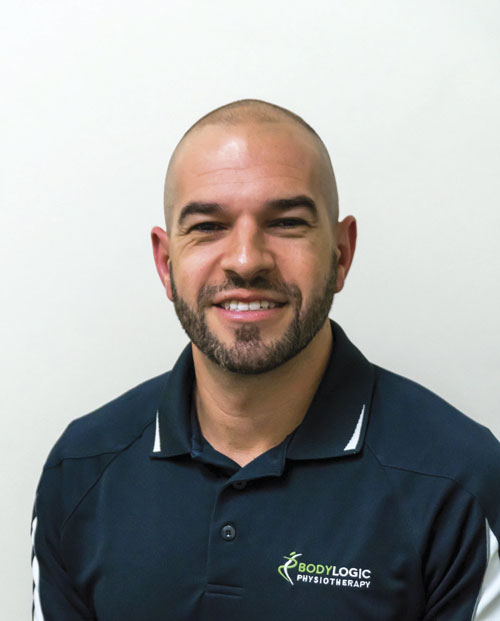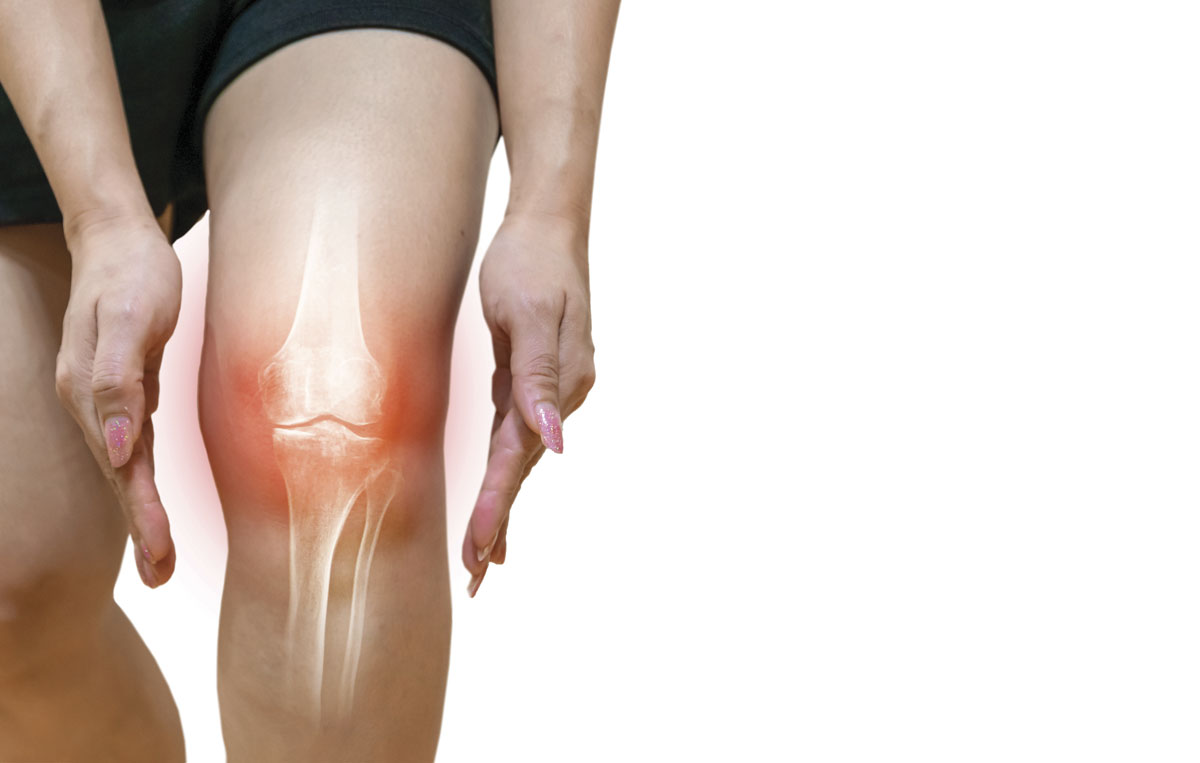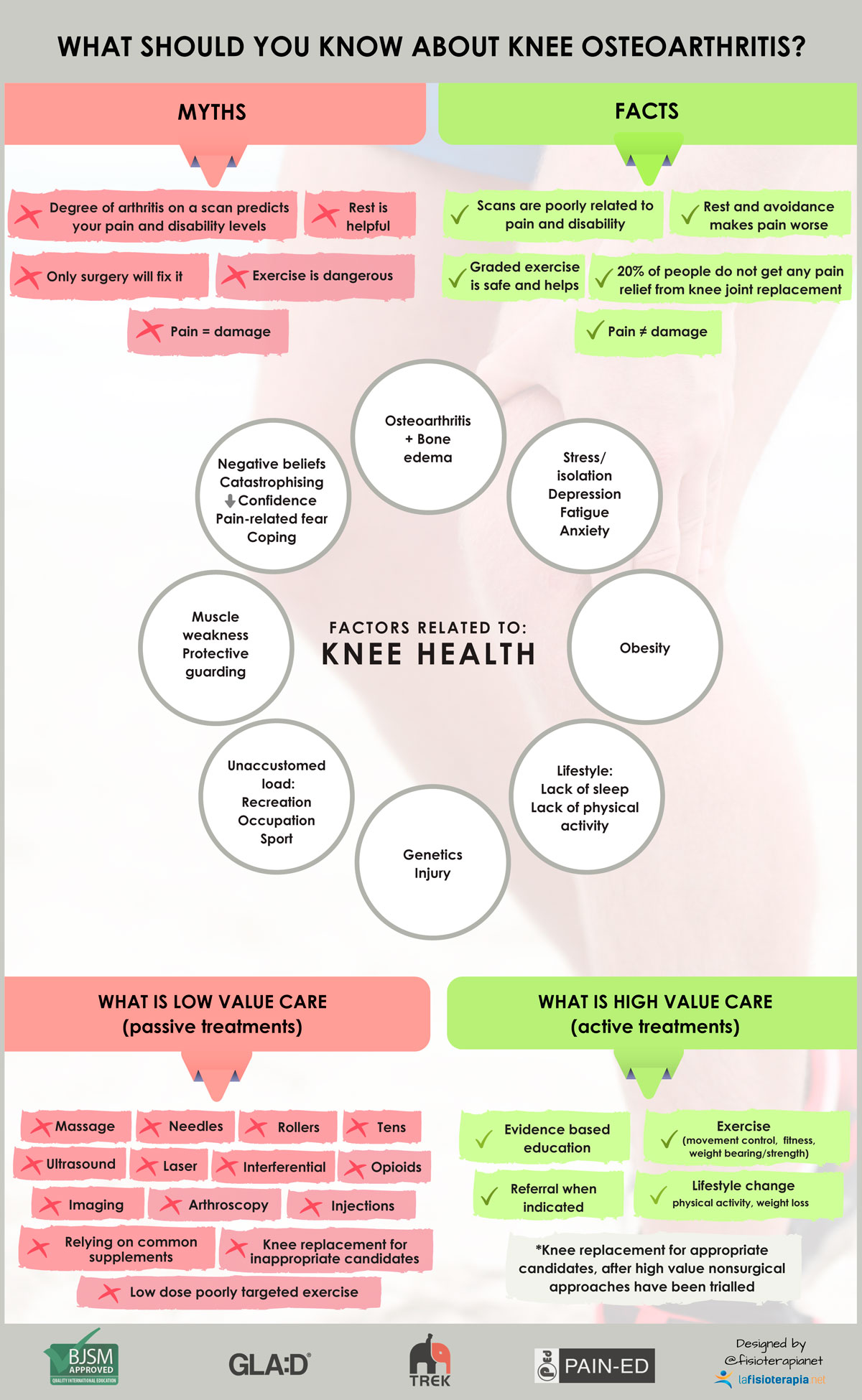“It’s bone on bone…caused by wear and tear”, This is the common understanding of knee osteoarthritis (OA) affecting 9% of Australians.
Best-practice guidelines recommend first line non-surgical interventions such as education, progressive strengthening exercise and weight loss. Evidence supports these interventions as effective at reducing pain and disability, lessening use of medication and surgery.
However, common misconceptions about knee OA negatively influence clinicians’ referral to, and patients’ acceptance of, nonsurgical management. Australian GPs are three times more likely to refer patients with knee OA for surgical opinion, than nonsurgical management.
When OA diagnosis is given based on imaging, patients are generally told their pain is due to ‘bone on bone’. This may lead many patients to disregard exercise-based interventions believing it would further damage their joints.
A person’s knee pain experience is influenced by biological (imaging findings, inflammatory processes, muscle weakness), psychological (low confidence, belief that exercise will cause damage, emotional stress, depressed mood), and social (work and sport demands), and lifestyle factors (poor sleep, low or excessive physical activity, obesity) that can mediate neurophysiological and inflammatory processes, sensitising knee structures and driving disability behaviours such as avoiding activity.

Clinicians should move from labelling knee OA as purely ‘structural damage’ towards understanding it as a ‘whole person condition’ with pain as a modifiable symptom related to sensitised knee structure.
Thus, we should adopt a person-centred approach, educating the patient about knee health, encouraging progressive exercise-therapy, regular physical activity and weight loss, and reassure that it is safe to exercise and strengthen their knee without harm.
This helps patients build a positive mindset, adopt a healthier lifestyle and confidently manage pain flare-ups. Surgery is then reserved for patients with advanced OA, without adequate response to non-surgical care, and who are predicted to have a good response to surgery.
Management can be individualised with a physiotherapist or in a group environment. Group rehabilitation programs such as GLA:DTM (Good Life with Arthritis: Denmark) developed by researchers in Denmark is an evidence-based option for OA patients.
GLA:DTM is a physiotherapist-led treatment consisting of two group education, and 12 group exercise-therapy sessions for people with OA. Research in Denmark reported pain reduction by 35%, reduced analgesic consumption; and improved function and physical-activity level at one year.
This program is available across Australia (https://gladaustralia.com.au/), including Perth.
To change the view about OA towards joint health, changes need to occur at a public level through media campaigns, at the health system level with funding, and better reimbursement for exercise and education programs, and at a clinician level with the provision of evidence-based care.
The author acknowledges the input of Prof Peter O’Sullivan.
Key messages:
- OA changes on imaging do not solely explain a person’s pain experience.
- Exercise is safe and strengthens a knee with OA changes without causing harm.
- Address the multiple biopsychosocial factors affecting pain and disability.
References available on request.
Questions? Contact the editor.
Author competing interests: nil
Disclaimer: Please note, this website is not a substitute for independent professional advice. Nothing contained in this website is intended to be used as medical advice and it is not intended to be used to diagnose, treat, cure or prevent any disease, nor should it be used for therapeutic purposes or as a substitute for your own health professional’s advice. Opinions expressed at this website do not necessarily reflect those of Medical Forum magazine. Medical Forum makes no warranties about any of the content of this website, nor any representations or undertakings about any content of any other website referred to, or accessible, through this website.



